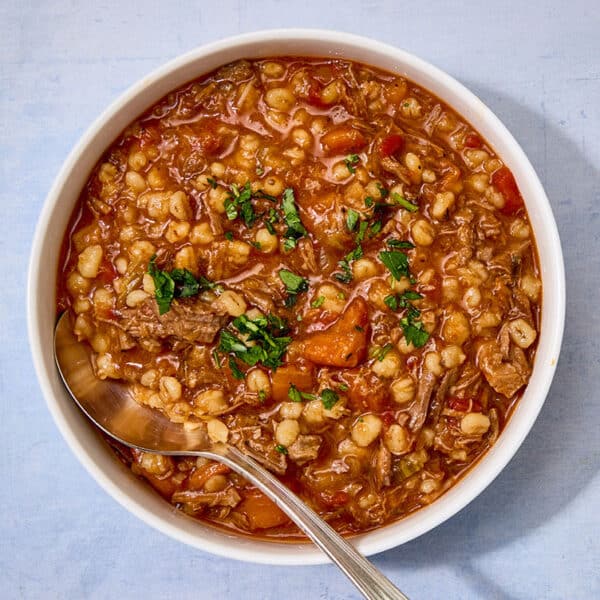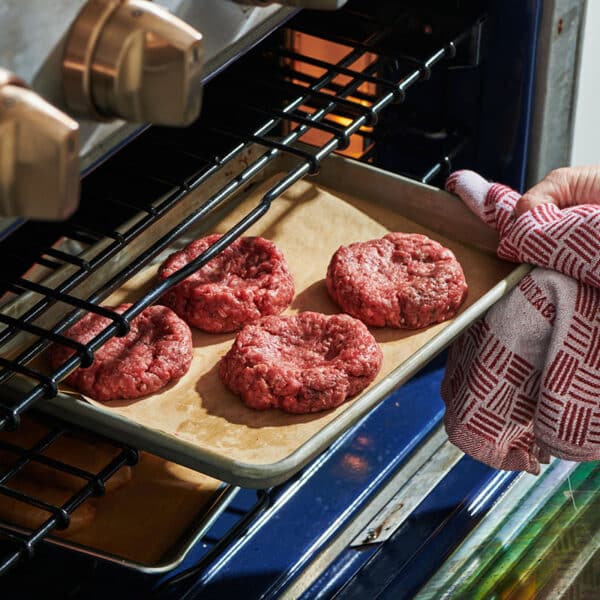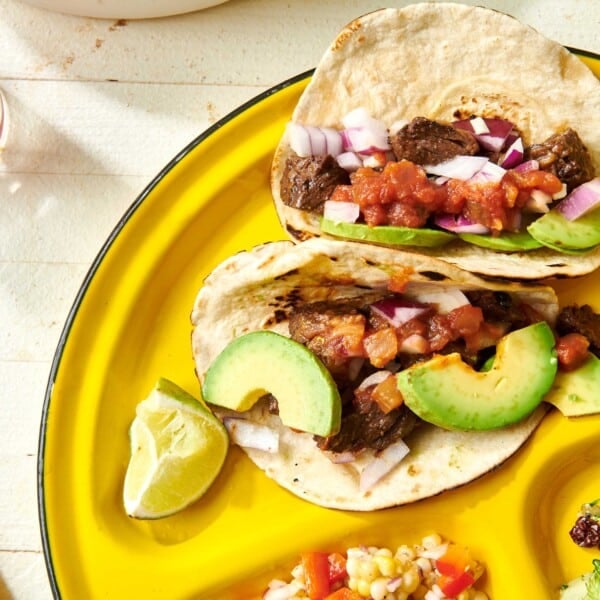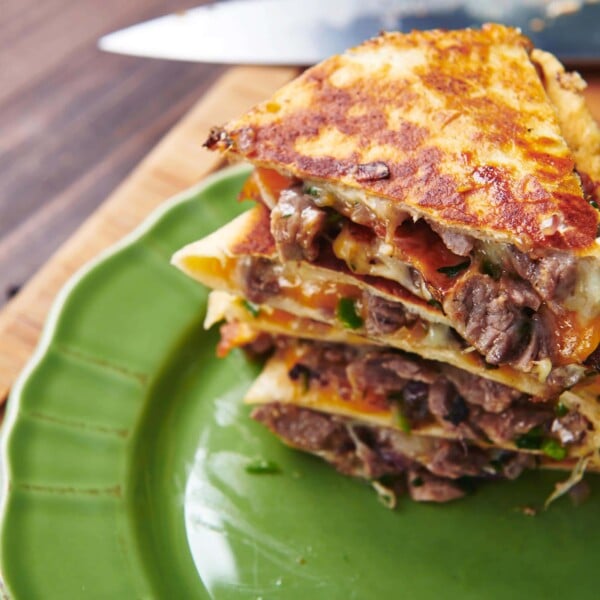Ropa Vieja
on Dec 18, 2022, Updated Feb 14, 2024
This post may contain affiliate links. Please read our disclosure policy.
Amazingly savory and tender, this beef dish is the national dish of Cuba, and just the thing to dig into on a cold winter night.
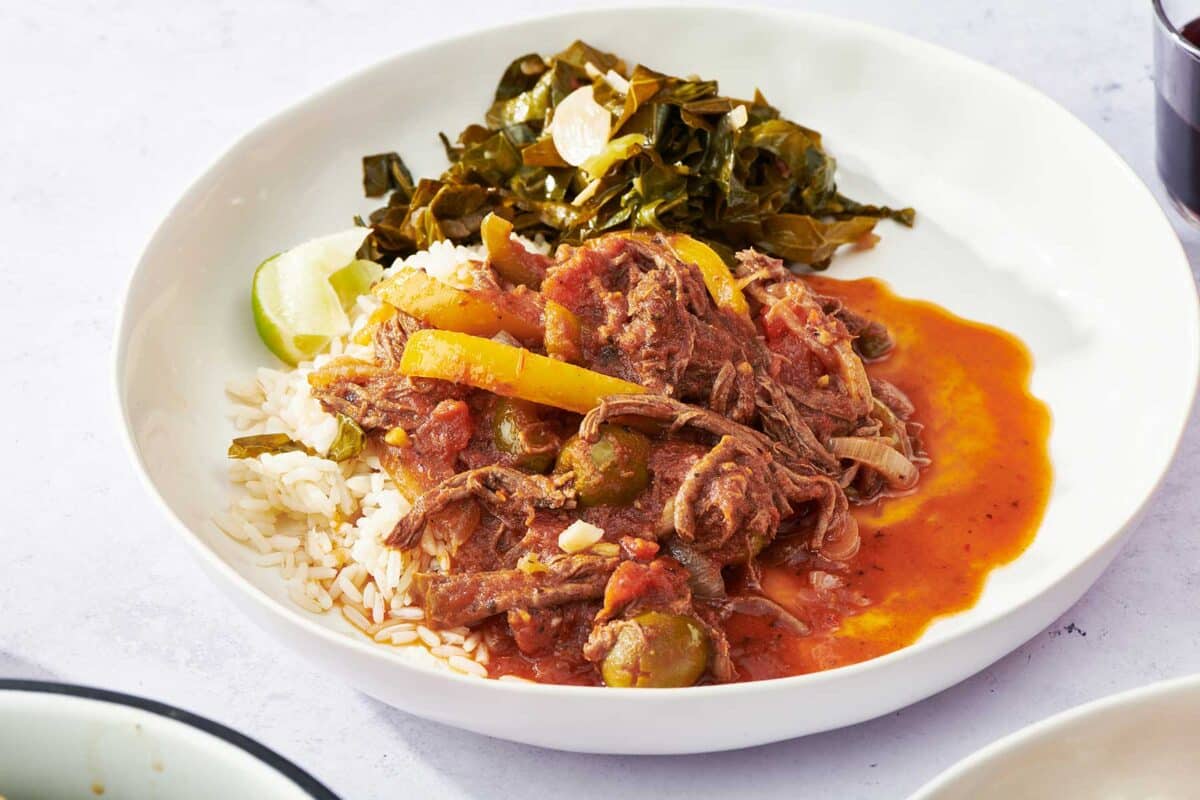
Ropa Vieja is shredded stewed beef, the national dish of Cuba. It is made with tomatoes, garlic, bell peppers, and onions, and it’s so tender and flavorful. Of course, there are infinite versions of ropa vieja in Cuba and in the kitchens of Cuban cooks. Versions of this dish are also popular throughout Central America and the Caribbean. You might find the stew called desmachata in Columbia or Venezuela.
What's In This Post?
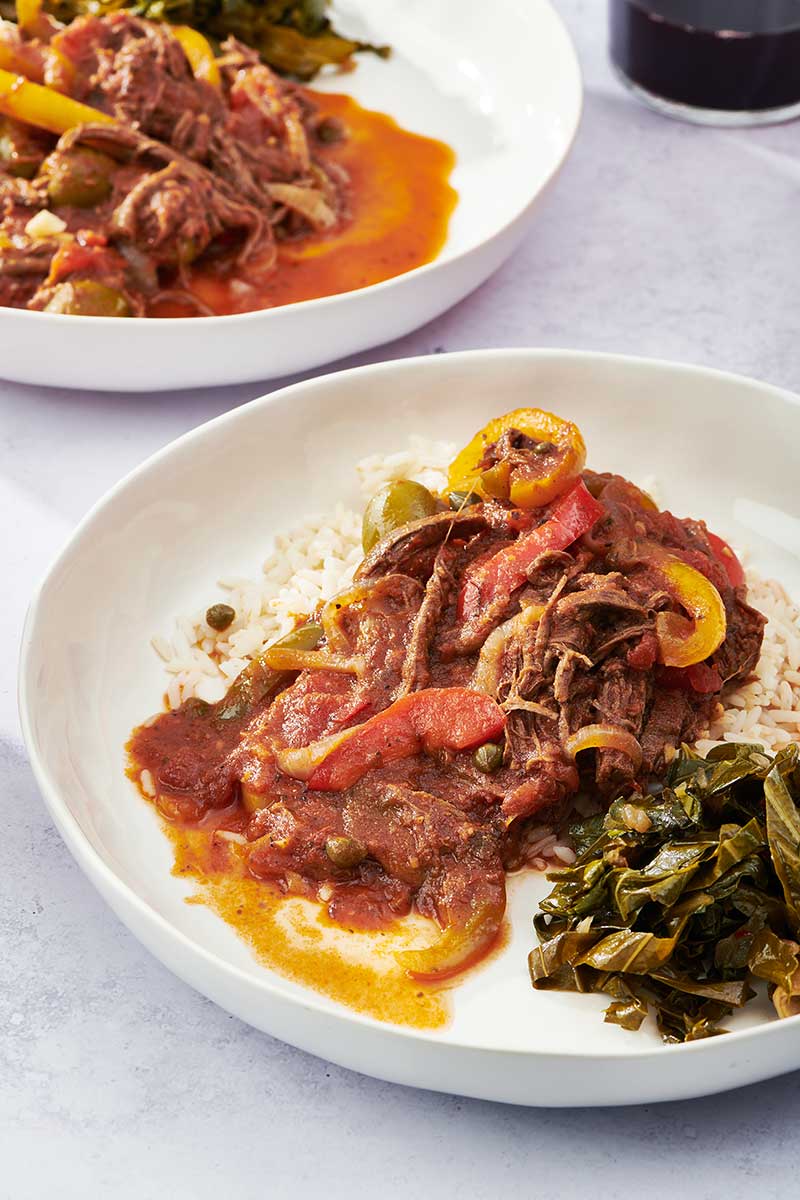
Ropa Vieja: Amazingly savory and tender, this beef dish is the national dish of Cuba, and just the thing to dig into on a cold winter night.
By signing up, you agree to our Privacy Policy.
What Is Ropa Vieja?
The name translates to “old clothes,” which is not the most appetizing phrase, but it does accurately describe the sort of shredded strands of beef that are featured in this dish. Don’t let the name (pronounced row-puh-vee-ay-haa) dissuade you. This rich, savory, juicy, fall-apart beef is exactly what meat lovers crave when they are thinking of comfort food.
After reading and mulling over a whole lot of recipes, I came up with my version. I included green olives with pimentos (I love olives in braised meat and poultry dishes), bay leaves (ditto), and canned tomatoes (though you could use fresh). I also did brown the beef before simmering it, as I always like the bit of extra flavor and texture searing meat offers to stews. A bit of cumin is used for seasoning, though I have also seen recipes that call for small amounts of cloves or cinnamon as well; add a pinch of cloves and up to a teaspoon of cinnamon if you like. Raisins are another common ingredient.
Bell peppers are a very common addition to this Cuban stew. Typically, green peppers are used, but I like the combo of green plus one or two of the sweeter varieties: red, yellow, or orange. Some recipes call for a whole lot of peppers, but my family prefers a beefier version of this stew.
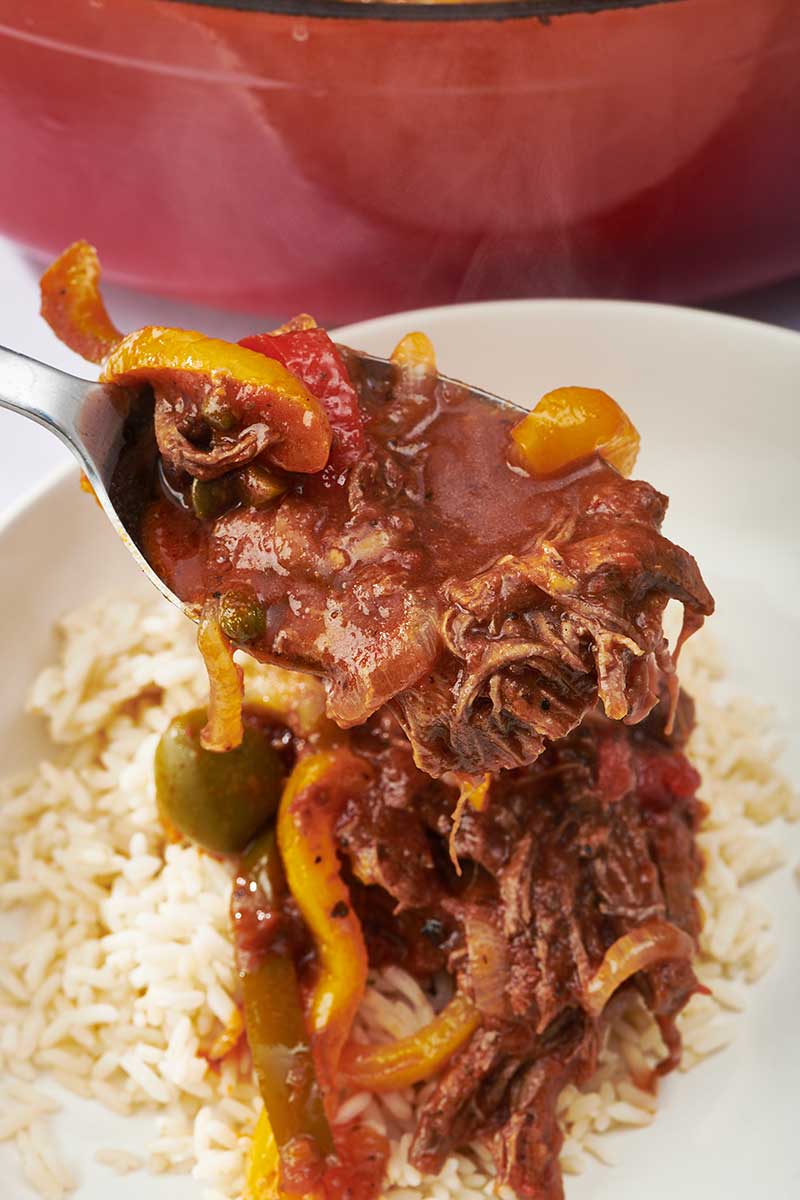
How to Store and Reheat Ropa Vieja
This stew can be kept in a refrigerated container for up to 5 days. You can also freeze the ropa vieja; put it in freezer proof sealable bags, press out excess air, and make sure to label them. You can freeze ropa vieja for up to 9 months. Defrost in the fridge and reheat in a baking dish covered with foil in a preheated 300-degree oven for about 25 minutes, stirring occasionally.
Or heat it in a pot, stirring frequently, over low heat until it is hot throughout, about 15 minutes. You may want to add some more beef broth to loosen up the stew; if you have been super smart, you may have saved some of the reduced cooking broth from simmering the meat and can use that with all of its great seasonings.
You can also cook the beef (up through shredding, if you want) and reduce the cooking liquid ahead of time. Store the meat and liquid separately in the fridge for up to 2 days, then proceed with the recipe.
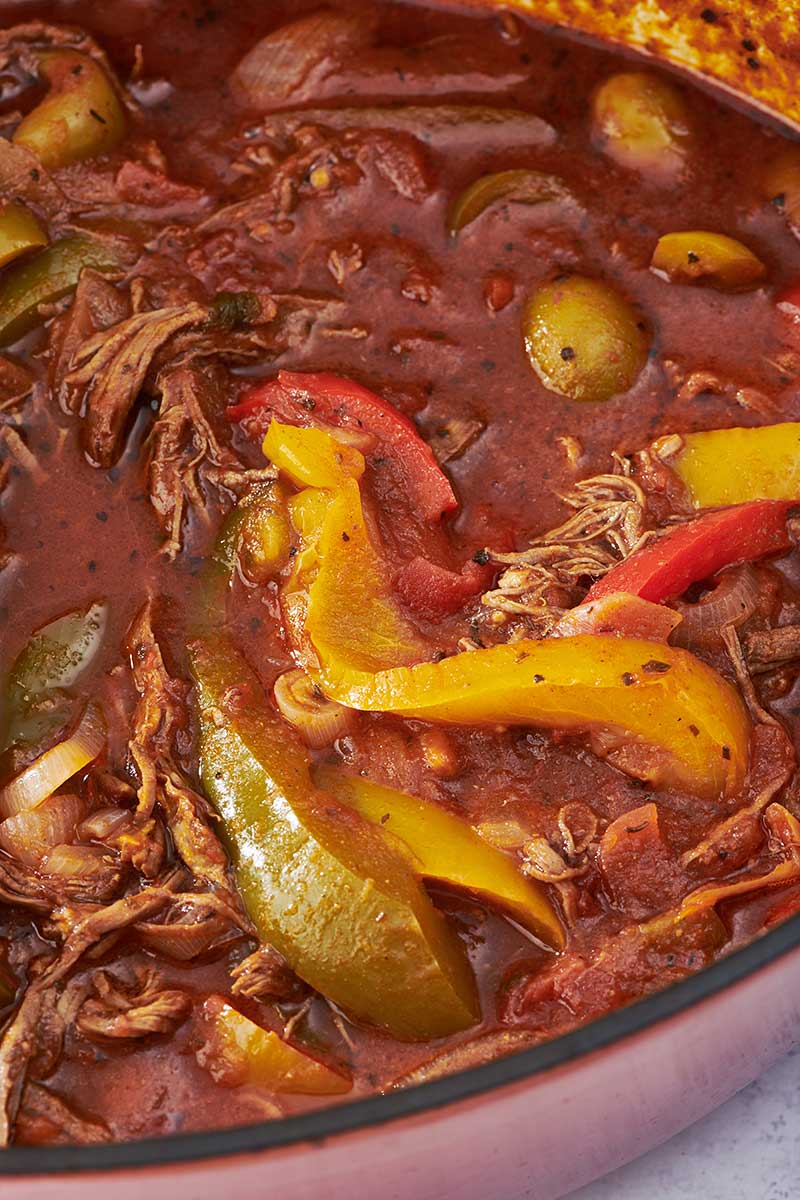
What Beef to Use in Ropa Vieja
Because the meat is slowly braised and then shredded, you do not (and should not) use a fancy, expensive cut of steak. I use flank steak for my version, which is the classic cut of meat used in this dish. It becomes fall-apart tender but still has some texture and chew to it, and allows for that ropy shredded consistency that is the namesake of this dish. Other possibilities are chuck roasts, brisket, skirt steak, or other cuts of beef well-suited to low and slow cooking.
What to Serve With Ropa Vieja
Rice is the classic partner, and while white rice is most typical, you can also go with brown rice or any other kind of rice. Black beans and greens are also popular side dishes.
- Black Beans and Rice
- Hot cooked rice
- Quinoa
- Bulgur Wheat
- Tostones (fried sweet plantains are a common accompaniment, too)
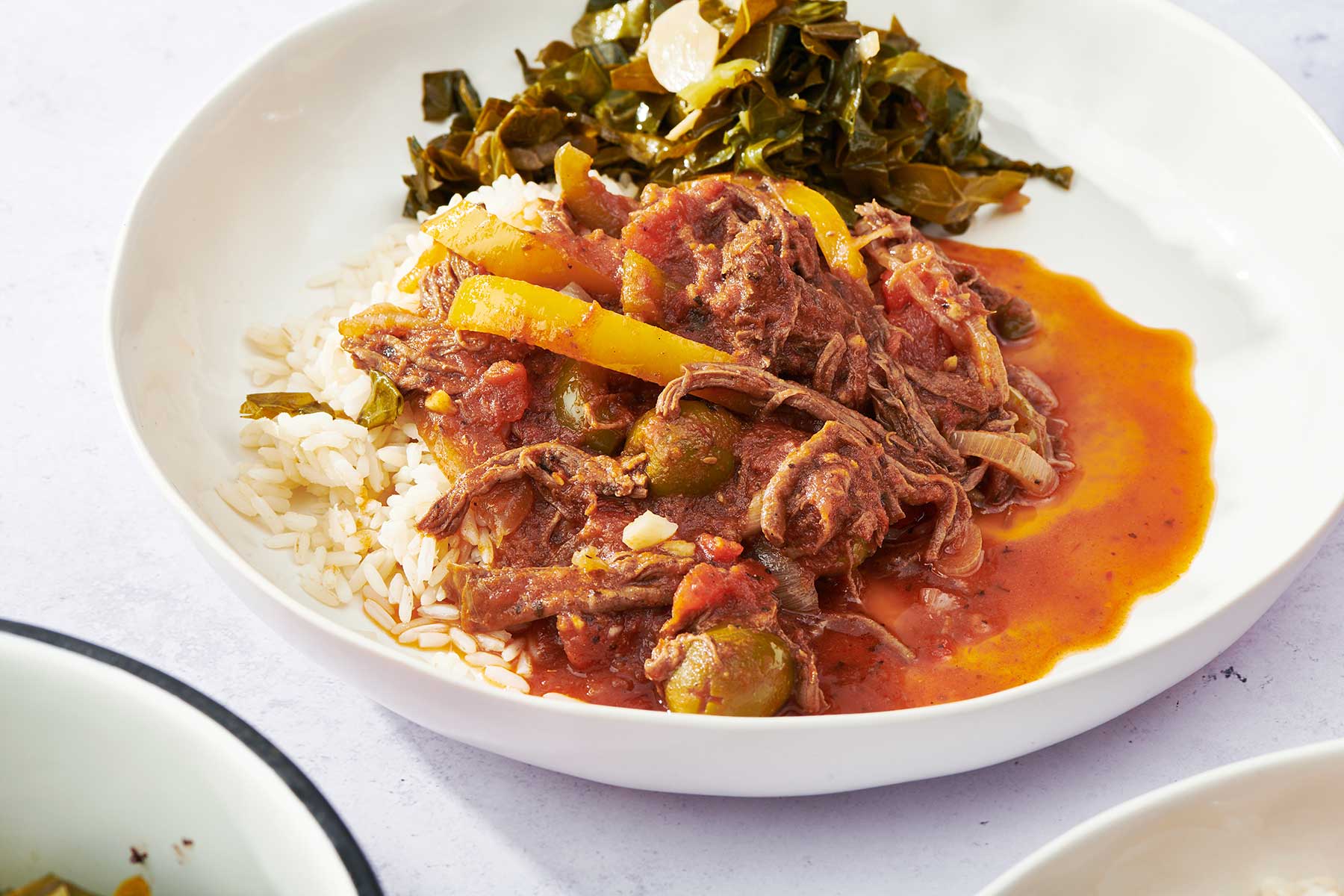
More Braised and Stewed Beef Recipes
Pin this now to find it later
Pin It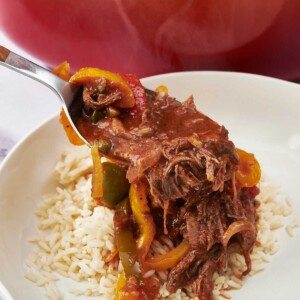
Ropa Vieja
Ingredients
- 4 tablespoons vegetable or other neutral cooking oil (divided)
- 2 ½ to 3 pounds flank or skirt steak
- 2 quarts (8 cups) water
- 2 carrots (peeled and chopped)
- 2 stalks celery (chopped)
- 1 large onion (chopped)
- 2 bay leaves
- Kosher salt and freshly ground black pepper (to taste)
- 3 cloves garlic (finely chopped)
- 1 red bell pepper (cored, seeded, and sliced into thin strips)
- 1 yellow or orange or another red bell pepper (cored, seeded, and sliced into thin strips)
- 1 green bell pepper (cored, seeded, and sliced into thin strips)
- 1 red onion (halved and thinly sliced)
- 2 teaspoons cumin
- 2 teaspoons oregano
- 1 (28-ounce) can crushed tomatoes in puree
- 1 cup small pimento-stuffed olives
- 2 tablespoons drained capers
For Serving:
- Hot cooked rice
- Lime wedges
- Hot sauce
Instructions
- Heat 2 tablespoons of the oil in a large, wide, deep skillet or a Dutch oven over medium heat. Add the steaks, in batches if necessary, and sear for about 5 minutes on each side, until nicely browned. You can cut the steaks if needed to fit more into the pan in a single layer, as they will get shredded at the end anyway. Add the water to the pot, then add the carrots, celery, onion, bay leaves, cumin, and salt and pepper. Bring to a simmer over medium-high heat, then lower the heat and simmer, uncovered, for about 2 hours, or until the meat is very tender. If the cooking liquid seems to be reducing too quickly, add another cup or two of water. Remove the meat to a dish or cutting board to rest, and strain the broth. Discard any solids, return the broth to the pot, and continue to simmer until reduced to about 2 cups.
- While the meat cools and the cooking liquid reduces, in another large deep skillet or Dutch oven, heat the remaining 2 tablespoons oil over medium heat. Add the garlic, the red, orange or yellow, and green bell peppers, and the sliced red onion. Season with salt and pepper and saute, stirring often, for about 10 minutes until the vegetables are tender and a bit browned along the edges. Stir in the cumin.
- When the meat is cool enough to handle, use your fingers or two forks to shred it into thin shreds. Add the meat to the sauteing vegetables, along with the oregano, and 1 to 2 cups of the reduced cooking liquid (save the rest for another use, or add more if you want a looser consistency). Stir in the tomatoes, olives, and capers, and bring to a simmer. Adjust the heat so the stew stays at a gentle simmer and cook, stirring often, for about 20 minutes until it smells so good you know it’s ready. Taste and adjust seasonings as needed. Add more broth if needed, and serve hot, with rice, lime wedges, and hot sauce, if desired.
